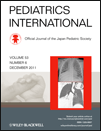Persistent left superior vena cava: Experience of a tertiary health-care center
Abstract
Background: The aim of this study was to assess the prevalence of persistent left superior vena cava (PLSVC) in patients with all types of congenital heart defects and to determine the congenital heart anomalies accompanying PLSVC.
Methods: The present study is based on a retrospective review of 1205 children who consecutively underwent cardiac catheterization from 2000 to 2007. In order to determine the existence of PLSVC, all the subjects routinely underwent superior vena cava (SVC) injection during angiography at the catheter laboratory of the study center.
Results: The prevalence of PLSVC was computed to be 6.1% for the present study population. Transthoracic echocardiography was able to detect PLSVC in 32 children (2.6%) whereas angiography diagnosed PLSVC in 74 children (6.1%). The mean age of the patients with PLSVC was 40.09 ± 50.21 months. A communication between the right and left SVC was determined in 27% of the children who were diagnosed with PLSVC after angiography was performed (20 out of 74). A statistically significant association was present between PLSVC and other congenital cardiac anomalies, including ventricular septal defect (n= 42, 56.8%), atrial septal defect (n= 31, 41.9%), pulmonary stenosis (n= 19, 25.7%), atrioventricular septal defect (n= 10, 13.5%), patent ductus arteriosus (n= 6, 8.1%) and cor triatriatum (n= 3, 4.1%).
Conclusion: Transthoracic echocardiography usually visualizes dilated coronary sinus in association with PLSVC. However, SVC injection should be performed in patients undergoing angiography so that morbidity and mortality related with persistent left superior vena cava can be avoided during cardiovascular surgery.




